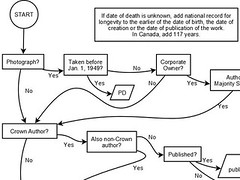Last week I completed my draft contribution to the Exploratory Workshop on Consuming the Illegal: Situating Digital Piracy in Everyday Experience which will be held in Leuven (17‐19 April 2011). The draft paper is called Barriers to Cultural Participation: Cultural Innovation and Control Online and attempts to go deeper into the problem of borrowing or appropriating earlier works in the creation of new cultural material.
What I am attempting to do is to point to the problem that while the law is a useful tool of regulation a great deal of regulatory power is in the hands of norms. The result is that amateur remixing is discriminated against and often runs the risk of being lost, instead of being encouraged as an important source for growth of cultural material.
So the paper looks at different forms of re-use (and gives examples of each). So in the end it looks like this… The thing to be discussed is therefore not the law but the ways in which certain types of remixing/borrowing/appropriation are tolerated while others seem not to be…

The end needs to be sharpened but here is what I have written so far (full draft is on scribd)
The topic of this paper was to take a closer look at some of the different ways in which cultural material is used and reused. In particular this work wanted to widen the discussion by not limiting it to being either a legal, technical or social topic. The production of innovative cultural material relies on a healthy access to earlier material, the creativity to expand on that material, the legal leeway to share that material and the technical platforms with which to reach other users.
For most of the history of copyright the most limiting factor for a large scale participatory cultural sphere has been limited by the lack of technical means with which to create and share the results of the work. Today these technological limitations have been reduced and are easily surpassed by most users wishing to participate in a cultural exchange.
We should therefore be entering into an unprecedented production of cultural material. One the one hand this is exactly what is happening. The amounts of copyrightable material being produced and spread today are far greater than in any other period in history. However, on the other hand, the legal risks and the regulation through licenses discussed here show that the material being produced and spread is discriminated against and is under risk of being removed, and its authors punished for their productions.
These issues need to be addressed. The original purpose of copyright, and its often legitimizing reason put forward today, is that by protecting the rights of the creator there will be an increased incentive to produce more material. Society offers a monopoly in return for an increased level of cultural material. However this bargain has been steadily eroded and is, at the point where it is technically possible for a wide scale participation in danger of being lost.

